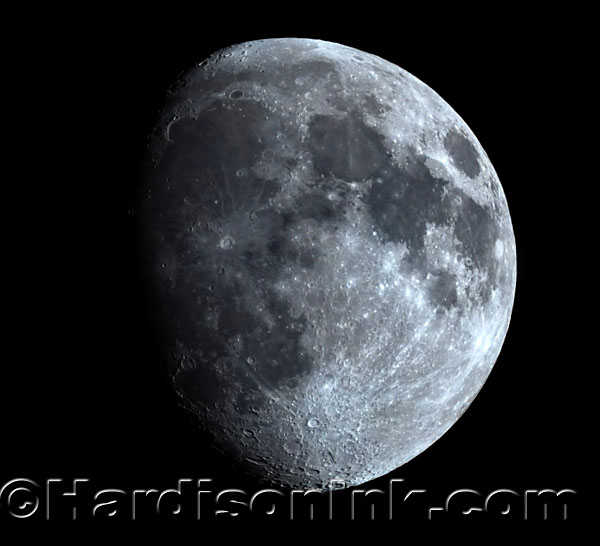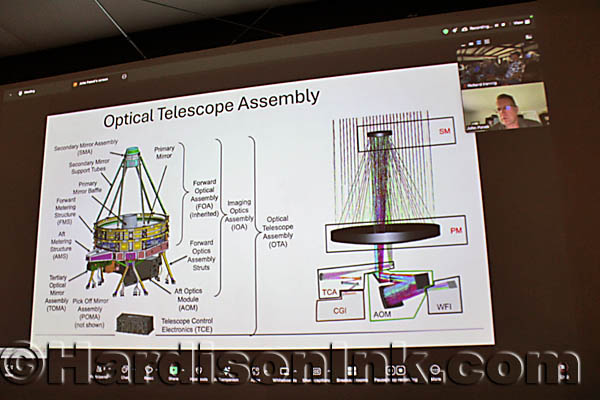
Supermoon chase
leads to sunrise on Cedar Key
Having missed the moonset on the east side of the island, a photographer enters the Cedar Key City Park just before sunrise on Nov. 5 to begin another island adventure there.
Story and Photos By Jeff M. Hardison © Nov. 6, 2025 at 7 p.m.
All Copyrights Protected By Federal Civil Law
Do Not Copy and Paste to Social Media or Elsewhere
CEDAR KEY – The best laid plans of an astronomical photographer can go awry.
Or as Scottish poet Robert Burns (Jan. 25, 1759-July 21, 1796) said – in part -- in a poem known as “To A Mouse” or more properly titled, “On Turning her up in her Nest, with the Plough” (November 1785):
The best laid schemes o’ Mice an’ Men
Gang aft agley,
An’ lea’e us nought but grief an’ pain,
For promis’d joy!

Click On Ad To Go To
The Credible Mind Website.
Here’s what happened before sunrise on Wednesday morning (Nov. 5). No mice were upended and while the plan did not unfold as planned, it still brought joy from the start of a new day.
A man who has taken several pictures of full moons and supermoons performed the math to arrive on the east coast of Cedar Key at moonset that morning. Not allowing for a slowdown due to fog, or for other traffic being on the road, the math for distance traveled at a certain speed was correct – however it did not fit the actual “wheels going round and round on the road” half-hour trip.
Hence, given the Moon would not reset itself or slow down to accommodate the photographer, he arrived a few minutes after that spatial object had dropped below the Earth’s horizon and out of view there on that morning.
This led to some quick research and photography on the island.
Aha! Sunrise.
Early morning fish caught
on Cedar Key’s big cement dock
Gregory Davison (left) and Billy Bennett fish from Cedar Key’s big cement dock just after sunrise on Wednesday (Nov. 5).
Story and Photos By Jeff M. Hardison © Nov. 4, 2025 at 5 p.m.
All Copyrights Protected By Federal Civil Law
Do Not Copy and Paste to Social Media or Elsewhere
CEDAR KEY – The early bird catches the worm.
The early journalist catches the fishermen who catch the fish while they use small crabs as bait rather than worms.
Just a bit after sunrise on Wednesday morning, fishermen were on the big cement dock on the small island of Cedar Key. Among the anglers then and there, were Gregory Davison, 22, and Billy Bennett, 31, both of Archer.
Within minutes of agreeing to a photo opportunity, Davison had a fish on his line. Bennett reeled in his line and dropped the long net to the water to scoop the very hooked fish and bring it up to the dock.
The hooked fish waits to be lifted from the water.
The net is put in the water to bring up the hooked fish.
Gregory Davison holds the 17-inch-long black drum immediately after unhooking it.
A winged fisher (pelican) makes its way through the sky looking into the Gulf of Mexico for a fish to eat.
Davison removed the hook from the 17-inch-long black drum and put it in a bucket to take home to make fish filets.
It was a beautiful day in the neighborhood, although it was a bit cool. Parking on Dock Street is extremely limited for the time being due to the demolition of an area that was ravaged by fire before some of the hurricane destruction took out several buildings and other parts of the island.
Meanwhile, Cedar Key that sits next to the Gulf of Mexico at the end of State Road 24 in Levy County is restoring buildings and striving to retain its place as one of the various key destinations for residents and visitors in Levy County.
There was a recent pirate-themed set of events on the island.
On Nov. 8 (Saturday) from 9 a.m. to 5 p.m. at the George T. Lewis airport, KCDK, at Cedar Key there is the Cedar Key Fall Fly-In planned.
This is a significant event for pilots and aviation enthusiasts. It is a fly-in event at the shortest paved public use runway in Florida, offering a unique opportunity to visit the town of Cedar Key
The event includes a meet and greet with other pilots, as well as food and drinks available for purchase at the airport. Pilots are encouraged to show support for this airport, and to participate in this event to support the local community and aviation.

Andromeda Galaxy (Messier 31)
photo shows publisher
capturing deep space images

An image of the Andromeda Galaxy is seen here.
Story and Photo By Jeff M. Hardison © Nov. 4, 2025 at 4 p.m.
All Copyrights Protected By Federal Civil Law
Do Not Copy and Paste to Social Media or Elsewhere
LEVY COUNTY – There are some elections in the United States today (Tuesday, Nov. 4, 2025), but this story is not about that.
Instead -- It’s about space. It’s about time. It’s about one man in a dark sky place.
(It's About Time is a television series ran for one season in 1966 and 1967 for 26 episodes. The two different opens and closes are due to the fact that the series changed locations after episode 18 from prehistoric to modern times.)
Be Here Now
In the book with the Be Here Now title, guru Ram Dass writes about his “spiritual awakening” away from greed and possessions, etc. He offers readers tools to take control of their lives through yoga and meditation.
When Be Here Now was first published in 1971, it established Ram Dass as a sort of preeminent seeker of that century.
Just 10 years earlier, though, he had been known as Professor Richard Alpert. He held appointments in four departments at Harvard University. He was relatively wealthy. As the guru noted back in the early 1970s, the here and now cannot be there and then.
Meanwhile, this Levy County resident astronomer who is also a writer, editor and publisher has seen the movie The Andromeda Strain, as well as many other movies, and he earned an “A” in motion picture criticism at St. Petersburg Jr. College decades ago, And he watched various and countless versions of TV series spun off from the original Star Trek, the movie Star Wars and more.
He’s read so many books, too, that even listing the sci-fi or just science genres would be too much.
Now, applying and synthesizing decades of experience and learning to conceive the relationship of all that exists to the visual and digital space exploration from an Earth-based location would create a book that would be thicker than a New York City telephone book from the “ancient times” of the 20th Century.
On Monday night (Oct. 3), leading to what might have been the lead (or start) to this story -- daily news website publisher Jeff M. Hardison tried another experiment with equipment to digitally capture an image from space.
This time, he went against the odds by trying it in a span of time shorter than required for the best image, and from a place where he somewhat ignored obstacles such as the Moon reflecting sunlight during a time that night when it presented the strongest light interference from that source of nighttime sunlight for the whole year.
Hardison has tutorials waiting for him to read and view to help him in his deep space viewing and photography missions. Impatience is a challenge, too. Still, experiments are educational by resulting in unexpected answers appearing, as well as seeing the anticipated results come to bear.
With so many manmade satellites, the observation of one crossing the night sky during this span of time while the man sat on a plastic chair on sandy soil for 82 minutes in the very cool night may not have thrilled some other astronomers. Yet, just as seeing deer, wild hogs, armadillo and even lizards, turtles and birds, that viewing of satellites cruising across the sky remains a wonder for the gentleman from St. Petersburg.
It's about time. It's about space.
By thinking, humans can travel faster than the speed of light, as intimated in at least in one song by The Moody Blues.
The collection of photons in this experiment went through space to arrive at this telescope’s lens, where those bits of light were recorded and stacked together at 10-second intervals during 82 minutes on Nov. 3, 2025.
This happened in the neighborhood of 29” N 82” W (which includes an unrecorded subdivision known as Jemlands in Levy County). This astronomer has visited 29.40785 - 82.85970 (Chiefland Astronomy Village) on a few occasions.
Data collection in this experiment stopped at 11:10 p.m. (Eastern Standard Time) on Nov. 3, 2025, due to star streak.
In the context of this experiment, the app stopping its function during an observation session, refers to star trails or elongated stars detected in the individual images (sub-frames) being captured by the telescope.
The telescope has an intelligent feature where it analyzes each image before adding it to the final stacked picture (live stacking). If an image contains star trails, it is automatically rejected by the app's algorithm to maintain the quality of the final result. The function stops (or pauses the stacking process for that specific image) and displays a message like “star trails detected, image discarded.”
This can happen for several reasons, including field rotation, physical movement of the telescope, tracking issues such as an error in the software, or issues with initial calibration can also lead to the scope moving off-target and creating streaks.
And then there are the passing objects that can cause an issue – like satellites, airplanes, or even fast-moving high thin clouds.
Meanwhile, this galaxy’s light traveled for 2.5 million years to be recorded then and there, more or less on the southwest corner of that unrecorded subdivision of Levy County, where dark skies still exist.
How far does light travel after going through space for 2.5 million years? That’s about 15 trillion miles (14,696,563,432,959 miles).
Welcome to this home telescope on Earth, photons. Thank you for visiting this telescope and astronomer -- then and there, for publication to people viewing it here and now; wherever and whenever that is for them.
Local astronomer looks deeper into space

The first image of the Moon captured by a local astronomer using new equipment is seen here.
Story and Photo By Jeff M. Hardison © Nov. 2, 2025 at 7 p.m.
All Copyrights Protected By Federal Civil Law
Do Not Copy and Paste to Social Media or Elsewhere
LEVY COUNTY – A Levy County astronomer whose interest in stargazing started when he took Introduction to Astronomy as a student at the University of Florida in the late 1970s or early 1980s obtained a method recently to capture digital images from deep space.
Daily news website publisher Jeff M. Hardison said his interest in what is able to be perceived from Earth by looking into the night sky grew a bit from him visiting Chiefland Astronomy Village a few times so far in the 21st Century. The Astrofest 2025 event, too, hit the hyperdrive button for him looking at the night sky.
Now, he is not only looking at the sky; but he is capturing light digitally to share with the world.
During Astrofest 2025, he spoke with other astronomers; found an opportunity to look through a 32-inch telescope, again; and he saw during that time the light from astronomical objects that was perceived by him after the light had traveled for an extraordinarily long time as it crossed a huge distance of space.
A 32-inch telescope by the way has that diameter of primary mirror or lens, used for astronomical observation. These powerful telescopes, such as Ritchey-Chrétien or Dobsonian types, are typically found in observatories for detailed imaging of celestial objects like galaxies, nebulae and asteroids.
Here on the West Coast of Florida, near to the Gulf of Mexico and the Suwannee River, Hardison has some space at The Ink Pad property where there is a clearing – even though it is relatively surrounded by trees, and which is in a dark sky area where he can observe stars, planets, comets, meteor showers, the Moon, rocket launches, etc. And he can now capture deep space galaxies, nebulae and more.
On Nov. 1, for the first time in his life, he sat at the controls of some gear to capture digital images of objects that are far away from Earth, where they either emit or reflect light to where he can ensnare and share images.
The first object he captured to share as an image was the Moon.
The Moon
Earth’s Moon on that night was in a Waxing Gibbous phase, with an illumination of approximately 80 percent to 83 percent. It appeared large and bright as it approaches the full moon stage, which is slated to occur a few nights later -- on Nov. 5.
“I’ve shot a lot of Moon pictures,” the multiple award-winning journalist said. “I’ve looked thorough several telescopes at various times from observatories in various Florida locations to see in actual time the light coming in there and then.”
He went on to note that he has a relatively small telescope and an extremely power pair of binoculars for live viewing. And now, he has a telescope that collects inbound light from objects in deep space to create accurate images digitally.
“I have some reading and thinking to do,” Hardison said, “but this adds a new dimension to this hobby for me. I hope to share this with people on the 15-year-old, multiple award-winning daily news website – HardisonInk.com.”
More Below These Scores

From The Games On Friday Night - Oct. 31, 2025
Published Nov. 1, 2025 at 10 a.m.
Little Blue Springs Park closed Nov. 4-14
Information Provided By Levy County Public Works Department
Published Oct. 30, 2025 at 2 p.m.
BRONSON -- Little Blue Springs Park will be closed to the public from Nov. 4 Nov necessary maintenance and repair work.
The Levy County Board of County Commissioners, in coordination with the Levy County Public Works Department, will be conducting necessary maintenance and repairs during this
time to enhance park facilities and better serve the residents and visitor.
For more information, please contact Levy County Public Works Department at 352-486-5217.
Nancy Grace Roman Space Telescope
progresses toward being launched

This NASA graphic shows the Optical Telescope Assembly and where the different spectrums of light reflect on the mirrors to create data to transmit to Earth.
Graphic By NASA
Story, Videos and Photos
By Jeff M. Hardison © Oct. 24, 2025 at 4 p.m.
All Copyrights Protected By Federal Civil Law
Do Not Copy and Paste to Social Media or Elsewhere
LEVY COUNTY -- The Nancy Grace Roman Space Telescope may answer questions in the areas of dark energy, exoplanets and astrophysics.
Despite a federal government shutdown that is impacting the National Aeronautics and Space Administration (NASA), one scientist spent time Saturday (Oct. 18) to help astronomers at Astrofest 2025 know details of the telescope.
Dr. John Planek presented his program and answered questions via Zoom, although before the government shutdown he had planned to be at the event held in Levy County in person. Planek is among the NASA workers who must continue his duties despite political infighting from some American leaders in Washington, D.C.
Planek is based at the Goddard Space Flight Center in Greenbelt, Maryland, just northeast of Washington, D.C.
Dr. Richard Hennig, the curator and director of the Chiefland Astronomy Heritage Museum welcomed everyone to the program on Saturday (Oct. 18). Astrofest has grown every year, he said, and this year it showed a 50 percent growth rate from the previous year – bringing it now to the brink of capacity.
As for the keynote program of the day, Dr. Planek spoke about the space-based telescope, which was named after NASA’s first chief astronomer, “the mother of the Hubble Space Telescope.”
The Nancy Grace Roman Space Telescope will have a field of view at least 100 times larger than Hubble's, potentially measuring light from a billion galaxies in its lifetime, Planek said.
This graphic shows the difference in the field of view between the Hubble Telescope and the Roman Telescope, where Hubble’s field of view is the small square in the middle the Roman field of view is the much larger area outlined in white.
Graphic By NASA
Nancy Grace Roman (May 16, 1925-Dec. 25, 2018) served as NASA's first Chief of Astronomy throughout the 1960s and 1970s. She was one of the “visionary founders of the United States
civilian space program,” as well as being an astronomer who was instrumental in the planning and development of the Hubble Space Telescope and hence became dubbed as “Mother of Hubble.”
SpaceX, the creator of the Falcon Heavy, note this rocket has five million pounds of thrust. Falcon Heavy is composed of three reusable Falcon 9 nine-engine cores whose 27 Merlin engines together generate enough power to lift what is equal to approximately eighteen 747 aircraft.
More specifically, as one of the world's most powerful operational rockets, Falcon Heavy can lift nearly 141,000 pounds into orbit, SpaceX notes.
This is the current rocket system set to launch that telescope in what is hoped to be the not-so-distant future.
Since the advent and activation of the Hubble and James Webb telescopes, NASA scientists have learned and modified space-based telescopes through their application of the scientific method. Some of the synthesis of this newest telescope’s originally planned features were scaled back, though. One of those first-planned features was replaceable units that could be unplugged when they were worn out and then replaced.
While the replacement units are out as a design change, this unit can be refueled, Planek said.
While Planek is no longer working on the Nancy Grace Roman Space Telescope project, he was able to share so much information about it that it is not possible to capture in a feature story on a daily news website. His program was aimed more at advanced astronomers rather than the general public.
Even the high points for this machine cannot be captured concisely. For instance, six gyroscopes that are as big as car wheels and tires spin at different angles to adjust how the telescope is aimed. The movement of the telescope in space involves the physics of motion, centrifugal force, as well as heat and other forms of radiation.
There are parts on the Nancy Grace Roman Telescope to absorb vibrations from any moving parts in the telescope. Even the wires carrying power to the electric motors that power the huge gyroscopes are special in that they are created in a manner to not allow vibrations to travel along them as much as might be carried in some other forms of wire used to electrically power a device, Planek said.
This observatory will block starlight directly to see exoplanets and planet-forming disks, complete a statistical census of planetary systems in the Milky Way Galaxy, and settle essential questions in the areas of dark energy, exoplanets, and infrared astrophysics, NASA has noted.
The telescope has been in development for more than 20 years now, Planek said. Every component of this device has been tested by at least two independent research teams to assure success in its mission, Planek said.
Among the tests are those to ensure that the powerful launch forces do not impact on the mechanism being sent into space by those rocket engines. There are methods for this telescope to work in the extreme temperatures and radiation levels in space that have been proved by repeated testing on Earth.
Planek spent more than six years on this project, and he remains in touch with his colleagues. Dr. Planek has an impressive and extensive history in astrophysics, where he has been at NASA for about three decades now.
With a five-foot in diameter high-gain antenna, from one million miles away, this telescope will transmit information to various receivers on Earth at a rate of five to 10 times the fastest Wi-Fi rate that exists today, Planek said.
In other words, a data rate of 11 terabytes a day at 500 megabytes per second can be sent from space to receivers on Earth that are capable of accepting that much data that quickly, he said.
The program included more details and was enlightening for the astronomers in the room.
After the Roman telescope, there is the Habitable Worlds Observatory that is on the NASA list as it moves forward in observing the universe and goes forth with a plan for humans to walk on other worlds – beyond the Moon.
Twelve men, all from the United States, have walked on the Moon between 1969 and 1972 during the Apollo program. The United States is the only country to have sent astronauts to the lunar surface.
Cedar Key Lions Club 54th Annual
Seafood Festival roars with fun
Two-day festival continues today
The midway for the 54th Annual Cedar Key Lions Seafood Festival is packed.
Story and Photos By Terry Witt
HardisonInk.com Correspondent © Oct. 19, 2025 at 8 a.m.
All Copyrights Protected By Federal Civil Law
Do Not Copy and Paste to Social Media or Elsewhere
CEDAR KEY – The City of Cedar Key was overflowing Saturday (Oct. 18) with visitors to the 54th Annual Cedar Key Lions Seafood Festival. The remarkable turnout is a testament to the marketing of the concept of determination of the people who live and work in the island city to return to normal devastating hurricanes hit Cedar Key in the past few years.
Cedar Key Lions Club President Robert Belair said he wasn’t surprised that Cedar Key’s historic Second Street, which serves as the primary site for the seafood tents and the arts and crafts show, was packed with visitors.
“There’s, so much spirit and drive on this island to get back on track. A festival like this helps lift everybody’s spirit,” Belair said.
The two-day festival continued Sunday (Oct. 19), as has been noted in the Community Calendar of the daily news website for several weeks before the event.
Characters from Enchanted Forest Fairy Tales wave to onlookers as they ride in the parade.
The Williston High School Marching Band performs in the parade.
Isabella Bishop and Eladio Lamberson of the Cedar Key School Junior Class show the clam fritters and coleslaw as they sell them for their part of the fundraiser.
Lindsey Grace Brault and Claire Ryan sell grouper sandwiches for a Cedar Key School’s fourth graders’ trip to visit St. Augustine.
Reggie Stacy, a professional country singer and Bronson town councilman, performs at the city park.
Cedar Key Lions Club President Robert Belair lets the world know that Cedar Key has returned as a destination for visitors to enjoy.
Cedar Key Police Chief Edwin Jenkins was on the job at the festival. He has served as police chief for four years now. Of Levy County’s eight municipalities only three – Cedar Key, Chiefland and Williston, have their own police agencies.
Caleb Brault, a Cedar Key School Safety Patrol member, tends to his business selling water.
Tracy Kocjancic shows off a sponge that can be used as a decoration. Sponge diver Michael Palmer is behind her.
Keith Martin Johns, one of the artists at the event, shows a piece of his work depicting a Cedar Key salt marsh.
A member of the Gainesville Shrine Club waves as he participates in the parade.
The Cedar Key Lions Club was selling “Tony’s World-Famous Clam Chowder” at its tent near the city park. It was selling bratwurst sausages as well during this fundraiser for many island-based causes.
Members of the Junior Class at Cedar Key School (CKS) sold clam fritters and coleslaw.
Fifth grade members of the CKS Safety Patrol were selling cold water to raise funds for a trip to Washington, D.C. During seafood and art festivals on the island, these children traditionally carry the water and sing a chant as they traverse the area, closing the deal on bottled water transactions.
Belair said there were 20 food tents, where nearly all of the people manning them were selling seafood. Added to this mix, there were more than 100 artists and crafts vendors at tents and another 13 non-profit organizations handing out information from their locations on the island next to the Gulf of Mexico.
“The town is back. Even on Dock Street, there are new owners that have put in new shops, and some of the ones that were already there have re-opened,” he said.
The Big Dock on Dock Street was open and attracting visitors. The Levy County board of County Commissioners reopened the large concrete structure as soon as possible. The dock had been damaged from the powerful impact of water and wind pushed by hurricanes last year and the year before.
The United States Postal Service’s Cedar Key Post Office has reopened. It didn’t attract any attention along Second Street but the fact that it was open was an achievement after being gutted by Hurricane Helene last year and another hurricane before that.
The Lions Club is a non-profit organization that invests all of its earnings into local clubs, and in site preservation in the Tri-County Area. The club wasn’t allowing professional food trucks or commercial vendors to operate at the festival. Only volunteer groups were allowed to serve as food vendors, as has been the custom.
“All of the money raised here stays on the island to support the clubs,” he said.
One of the more unique arts and crafts vendors on the midway was a tent selling sponges.
Tracy Connell Kocjancic and diver Michael Palmer attracted quite a bit of attention at their sponge tent.
Palmer said he dives in 10 to 20 feet of water in the Gulf of Mexico to harvest sponges but leaves about three inches of the sponge’s roots on the floor of the Gulf to allow the sponge to regenerate. The sponge will grow two inches per year after being harvested. The sponges can reproduce on their own by releasing spores that attach to rocks. The sponges can fertilize their own spores.
He showed off a Rock Island Sponge which looked like it was artificially produced, but it was indeed a real sponge, soft and puffy, that could be used for bathing. The larger sponges, which were stiff to the touch, could be used for decorations or wetted to be used as sponges.
Parks Wilson, who is native to Cedar Key, attracted visitors to his honey sales tent. His Cedar Key Apiary produces pure, raw, unprocessed honey. Wilson brought along a live exhibit showing a beehive in operation. The honeybees could be seen moving around behind the clear glass in a narrow hive.
Wilson serves on the Levy County Planning Commission, but he said honeybees have been a sideline for him since he was young. He said he would sneak away from his grandparents to work with his great uncle at his honeybee operation.
“When I was 15, my parents asked me what I wanted for my birthday. I said I want a beehive,” Wilson said.
His parents gave him a beehive. He stopped his first apiary when he went to college. Life got in the way, he said, and he didn’t go back to beekeeping for 30 years.
When Wilson moved back to Levy County and cranked up a new apiary, he found that beekeeping had changed completely from the days when he was a kid in Cedar Key. Invasive species are a problem now, along with mites that arrived from China. He said keeping his bees alive is the biggest challenge.
Wilson doesn’t treat his bees with chemicals to get rid of the mites -- like many commercial bee operations, but instead he has a way of controlling the mites. He loves running his apiary and producing honey.
Among the other events in the Tri-County Area Saturday were the University of Florida Institute of Food and Agricultural Sciences Nature Coast Biological Station (NCBS) having an Open House on Cedar Key; the BBQ from the Hart at Hart Springs RV Park Campground in Gilchrist County; the Yankeetown-Inglis Woman's Club's 43rd Annual Chili Cook-Off in Yankeetown; the City of Chiefland hosting a music festival at Trailhead Park, in downtown Chiefland; and the Levy County Horse Club Trailriders 24th Annual Breast Cancer Awareness Trail Ride in Goethe State Forest.
The seafood festival at Cedar Key continues today (Sunday, Oct. 19).
.jpg)

























